James Park explains how to ensure your sights are set for maximum scoring potential
In an earlier feature for Bow International I showed the results of some research I conducted on archers’ arrow groups at the World Cup Stage 1, and the World Archery Outdoor Championships, both in 2013. Many archers ‘gave away’ score by not setting their sights correctly – their groups on the target were not optimally placed to get them the highest possible score.
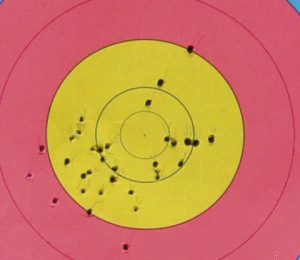
Noticing your group is off-centre after the distance has finished is too late to retrieve those lost points
Aside from the top archers in the men’s compound division, who did set their sights very well, many archers had their group off-centre on the target. One of the men’s recurve archers missed out on perhaps 23 points at just the 50 metre distance. One of the top women’s recurve archers missed out on perhaps seven points at the 30 metre distance. On average across all archers, including the top men’s compound archers who did things excellently, a shooter gave away about three points for every 36 shots, just through not setting their sight well enough.
Does this matter much? In short, yes it does. I have looked very closely at the correlation between the archer’s place in the ranking round and the archer’s place after the knock-out matchplay rounds. They are quite strongly correlated, so you need to get a good score in the ranking round if you are to have a reasonable chance in the matchplay. While it varies from event to event, one place in the ranking round is worth perhaps 0.7 points of score for a 72-arrow round of a major international event. Hence a few points lost due to a poor sight setting are very expensive indeed, as they seriously detract from your medal prospects.
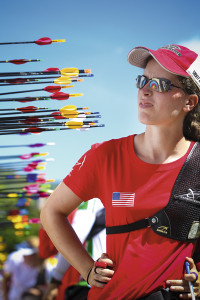
You can find the centre of your group after every six arrows, but this strategy might mean you lose points on all six of those shots
Have you ever lost an event by one point? I have. If you had taken more care with your sight settings and group positions you may well have gained many more than that one point.
So, if the position of your group really matters, what should you do about it? If you look at some of the pictures of the groups from the aforementioned events after the 36 arrows it seems to me to be blatantly obvious that the archers should have moved their sights. But they did not do so, or did not move it far enough or fast enough. And remember, the archers I was studying were the best in the world. In retrospect it is quite easy to look at the group and to say that, yes, I should have moved my sight, but that is way too late. We need some way of getting the sight in the correct place as fast as we possibly can so that any score loss in minimised.
The first step is naturally enough to have a good set of sight settings. All archers should use computer generated sight settings and there are a number of programs available to do just that (mine is Accurate Sights – available from Pats Archery in Australia). I have found that without using such a program archers struggle to obtain sight settings that are of sufficient accuracy, especially when they are shooting rounds with multiple distances.
The second step is to know that you should be continually looking to see where your arrows are grouping. Just reminding the archers on the Australian team to do that every end during 2013 at the World Cup events helped to minimise their score loss.
The third, and most challenging, step is to have a good strategy for moving your sight when your arrows are not grouping in the centre. It is especially challenging because we are trying to estimate the centre of the group when we have very limited data. One strategy (albeit a very poor one) is to move your sight setting according to the position of every arrow you shoot. In this strategy you are using just a single arrow to estimate the group’s centre, and it is likely to be a very poor estimate. The usual result is that your group just wanders around the target and you get a low score – it is not a good approach.
A better strategy is to shoot a number of arrows prior to looking to see where they are centred and then to move your sight accordingly. For example, you could find the centre of your group after each end of six arrows. It will be a much better estimate of the real centre of your group and will be much more likely to help you get your sight set correctly. However, if your sight was not set correctly for that end you will have just given away score for all six arrows, so it can be costly.
So, do you decide on an intermediate solution of perhaps three arrows before moving your sight? Reducing the number or arrows gets you a worse estimate of the group centre but a faster response. It might or might not be better. It can be quite a dilemma!
Another strategy is to move your sight immediately when you shoot a ‘good’ shot and it did not hit the centre. That strategy is satisfactory if most of your shots are ‘good’ shots, but poor if many are not. At one of the World Cup events several years ago one of my archers was getting nice groups in the nine ring. I suggested that it would be good to move the sight but was told that ‘my good shots are going in the 10, so my sight setting is ok’. That might be ‘ok’ if five out of six each end were ‘good’ shots, but very poor if only one or two per end are ‘good’ shots (as was the case for that archer on that day).
You should definitely know how much to move your sight to get your group on the target to move a given amount. For example, how much should you move your sight so that your group will move one full target ring at the distance you are currently shooting? I have found it is generally much more than archers think it will be. For example, when I am shooting at 50 metres I need to move my sight by 11 clicks (just over half a turn) to move my group by one target ring on an 80cm target face.
Perhaps the first thing for an archer to learn is to look at the arrow positions each and every end and estimate the group centre. That is very easy when each archer has a separate target face but more challenging when three or four archers are using the same target face. If you have a particularly poor shot in an end, estimate the group centre without including that arrow. Then move your sight the required number of clicks to move the group to be centred on the target – do it all in one go rather than creeping up on it a few clicks at a time.
A very good approach is to plot the positions of your arrows each end. That makes it easier to estimate the centre of the group, and can also be helpful for you and your coach in working out reasons why you might be losing score. Working out where those points might be going is the first step to getting them back.


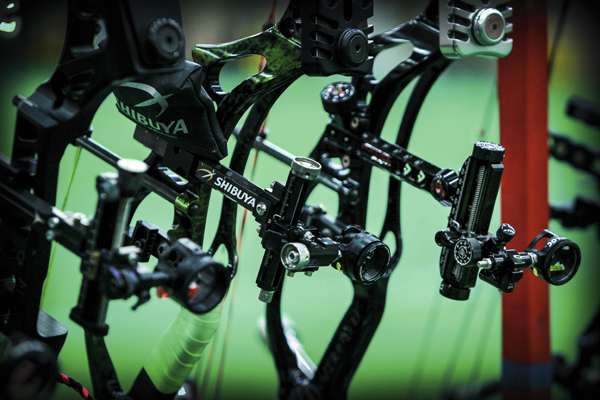
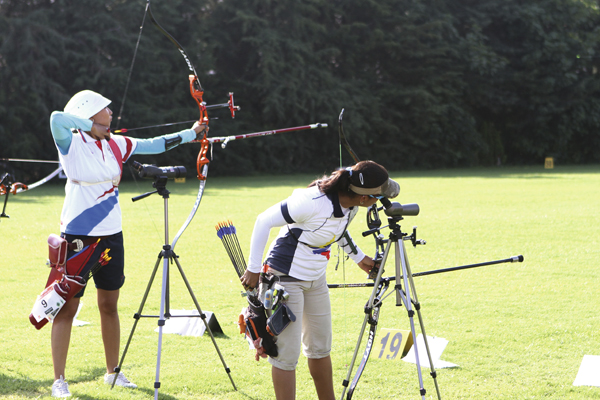
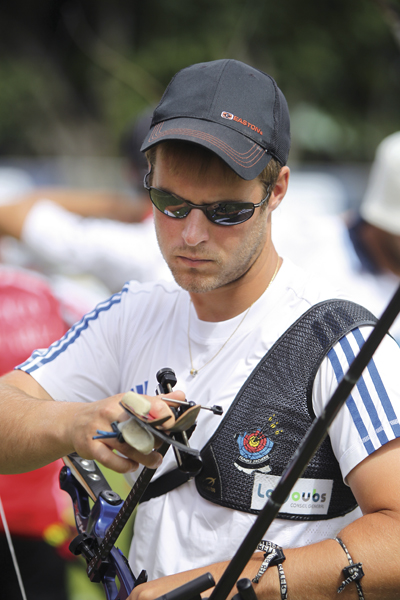
Nice to see a reprise of article, which I certainly appreciated when I saw it in print.
A couple of questions. Do you have, or use any particular software for plotting the groups to aid in centre-location calculation? If so is it used behind shooting line, or at target? Are there any issues of using stuff at the target. A number of big UK shoots I have been to recently have reminded archers that they are not allowed “electronic communication devices on or in front of the shooting line”. This would seem to preclude using mobile or table for plotting arrows at the target.
that should be “mobile or tablet”
A great article, I remember one shoot and one end of practice at 90m I had 3 arrows centrally in the gold and 3 as a group in the red.
I remarked that the 3 in the red were good shots and the 3 in the gold not so good, the reply I got from a target companion was – well you have a dilemma are you going to shoot more bad shots than good shots today or vice versa 🙂
As mobile phone apps get more sophisticated you can now plot from end to end your average group size and the centre point – is it legal to use such devices and software during a shoot.
If you buy a dozen arrows label them 1-12. Each time you shoot an end (in practise) mark the arrow hole with the number of the arrow. If several arrows group the same remember to use them as a set when in competition. Even though you buy matched arrows they fly different. Take your group of similar arrows. Use then as a set for a few ends to confirm grouping then adjust your sight to “gold” and resume…….It’s a technique commonly used in Longbow Archery using wooden arrows…sure it works for Recurve too.